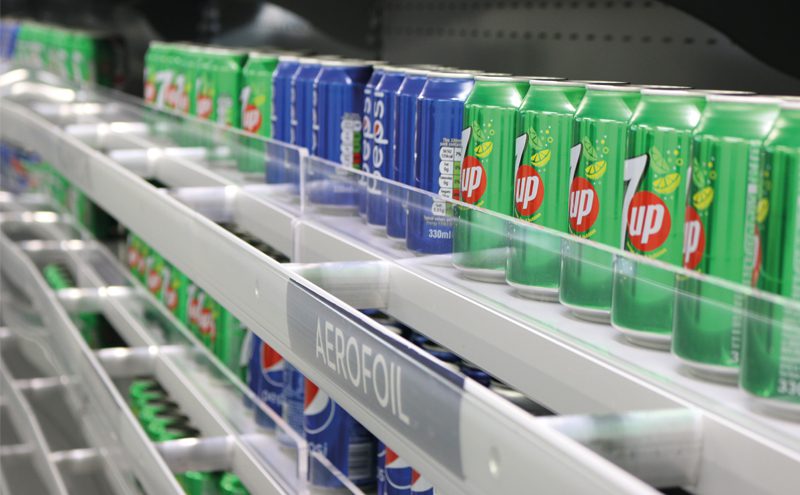Retailer rolls out cutting edge refrigeration to cut energy output

HIGH street retailer WHSmith has taken cues from Formula One inspired technology for its new in-store refrigeration system.
The firm has fitted Aerofoils to open-fronted refrigerators in more than 430 of its travel stores, a move that should save on carbon emissions while improving retail experiences for customers.
In their current design, open-fronted refrigerators tend to lose significant amounts of cold air, requiring a greater use of energy to make up for the losses.
Aerofoils will lower our energy consumption and related emissions, improving product quality.
Aerofoil – influenced by Formula One aerodynamics from Williams Advanced Engineering – helps to guide cold air down the fridge more efficiently, ensuring that substantially less air is spilt from the cabinet.
This then leads to lower energy use, fewer carbon emissions and warmer aisles for shoppers in stores.
Aerofoils have already been successfully implemented by Ignite Energy in trials in several WHSmith stores in the UK, as part of the firm’s preparations for a wider rollout across the WHSmith estate.

Paul McAndrew, chief executive of Aerofoil Energy said: “We are delighted that WHSmith has chosen Aerofoil to capitalise on the substantial benefits that our technology will bring to its retail estate.
“Our customers enjoy savings of up to 30% on refrigeration energy costs through this straightforward, cost-effective and retrofittable solution.
“By adopting Aerofoils WHSmith becomes one of our truly global clients and we are excited to see Aerofoils appearing around the world as we roll out our technology into WHSmith stores.”
Clare Meehan of WHSmith said: “Fitting Aerofoils across our retail estate will make a major contribution to our corporate responsibility programme, most importantly by lowering our energy consumption and related emissions, but also by improving product quality and reducing product waste.”


















